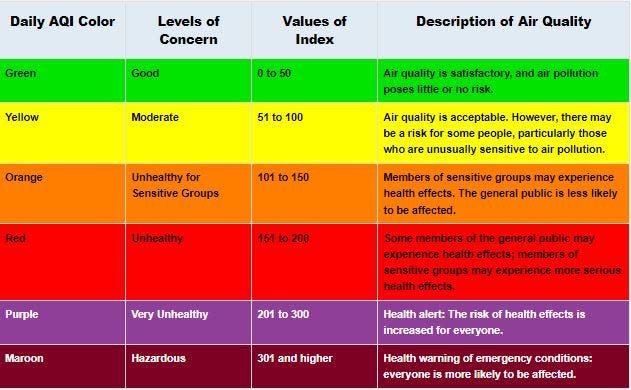Why is air quality bad today? Here's what you need to know
Poor air quality may be causing your skin irritation and itchy, dry throat.
And with the nearly record-breaking summer heat set to continue at least through Labor Day, you'll need to understand the Air Quality Index to know how air quality could impact your health, especially during a heat wave.
How does air quality affect my health?
The American Lung Association notes poor air quality could be particularly harmful to children, pregnant women, people with asthma and other lung diseases, anyone over 65, people who have diabetes or cardiovascular disease.
IQAir, a global database on air quality and pollutants, pointed out the health dangers that come from ozone, one of pollutants included in the Air Quality Index.
"Ozone is a lung irritant," read IQAir's site on heat waves and air quality. "When inhaled, ground-level ozone can cause short-term and long-term harm.”
Short-term symptoms can include coughing and wheezing; pain during breathing, irritated throat and shortness of breath.
So, how do higher temperatures equal poor air?
More ozone: Heat speeds up the creation of ground-level ozone, which is a pollutant
Less wind: Heatwaves and prolonged periods of high temperatures often come with still air, so pollutants don’t disperse and build up near the ground.
More pollution: People use more electricity for air conditioning, and cars emit more fumes, adding to pollution.
Wildfires: Heat can cause wildfires, which release a lot of smoke and particles into the air.
Plant emissions: Plants release more natural chemicals in the heat, which can combine with other pollutants to form more smog.
"Long-term," read IQ Air's air quality site, "the effects from ozone exposure can include: increased asthma attacks; reduced lung function; exacerbation of respiratory diseases; and cardiovascular disease."
What is the Air Quality Index?
The Environmental Protection Agency breaks down the six different air quality categories on its AQI website.
"Think of the AQI as a yardstick that runs from 0 to 500. The higher the AQI value, the greater the level of air pollution and the greater the health concern," read the EPA's AQI website. "For example, an AQI value of 50 represents good air quality with little or no potential to affect public health, while an AQI value over 300 represents air quality so hazardous that everyone may experience serious effects."

How do I check the Air Quality Index?
You can check the real-time status of your local air quality through the federal government's Air Now website.
IQAir also provides real-time air quality index values for Delaware, New Jersey and Pennsylvania.
Damon C. Williams is a Philadelphia-based journalist reporting on trending topics across the Mid-Atlantic Region.
This article originally appeared on Bucks County Courier Times: Why is air quality bad today? What to know about what you breathe
